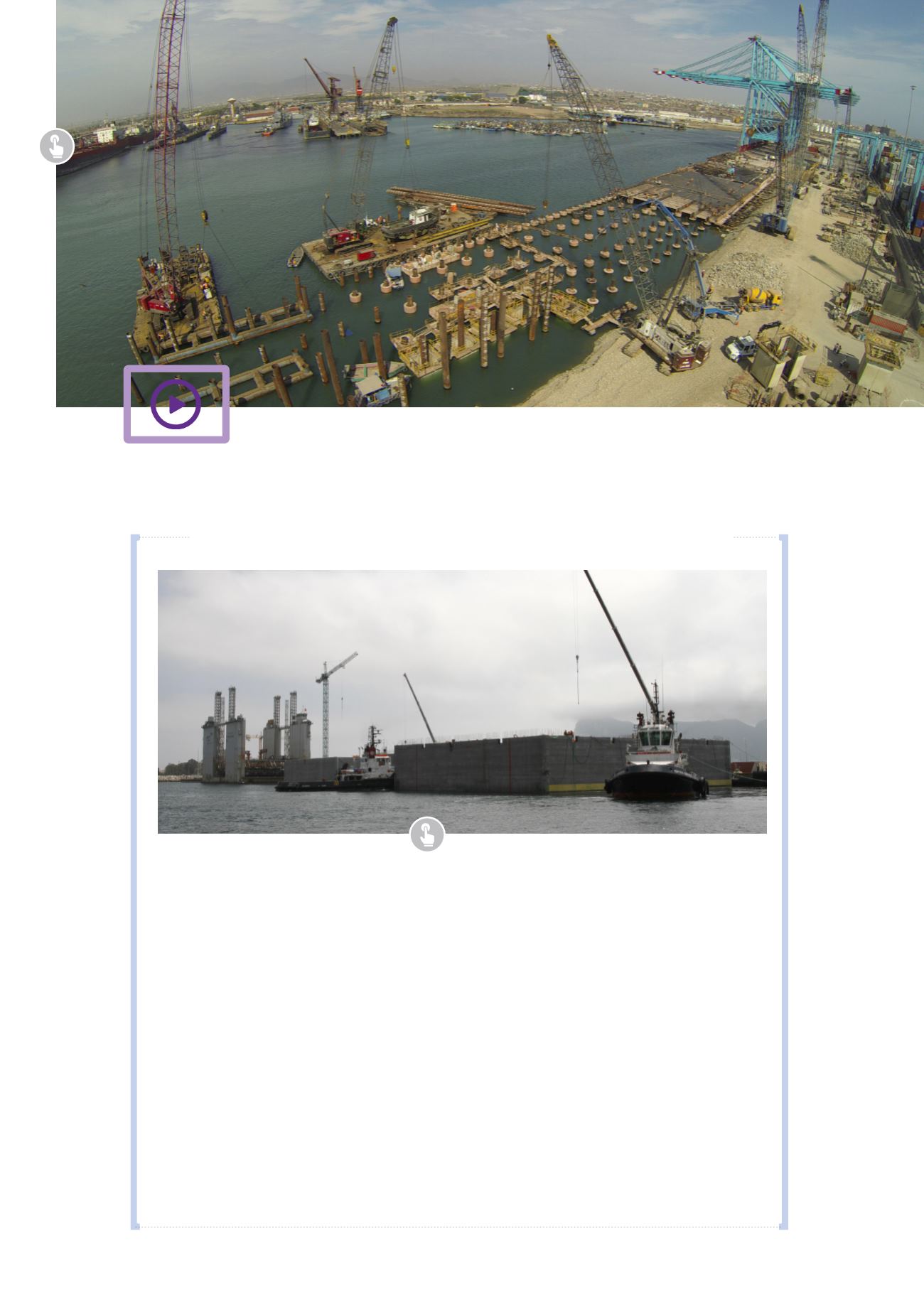

Floating dry-docks for caisson construction
FCC Construcción makes continuous efforts in
terms of investment and development to ensure
it has access to its own highly advanced means
of implementation. This allows for a high degree of
independence and service quality on the projects it
undertakes. Included among these assets are the
floating dry-docks ‘Mar del Teide’, ‘Mar del Aneto’
and ‘Mar del Enol’, as well as the stone dumping
barge ‘Acanto’.
The company’s floating dry-docks, which are desig-
ned for the construction of floating reinforced con-
crete caissons can be towed by sea to the location
of works, have played significant role in its latest
maritime projects. In the construction of the Port of
Açu project in Brazil, FCC Construcción used both
‘Mar del Aneto’ and ‘Mar del Enol’, two enormous
structures covering an area half the size of a foot-
ball field and measuring more than 25 metres, to
manufacture 40 out of all the 49 caissons required
to build the dock. These structures are between
46 and 59 metres long, up to 29 metres wide, up
to 35 metres high and weigh close to 10,000 tons
(without ballast).Caisson manufacturing on the dry-
docks takes between seven and ten days.
It is also important to mention that the first 11 cais-
sons for the Port of Açu were casted in Algeciras
(Spain) and transported by sea to Brazil on semi-
submersible boats alongside with the floating dry-
docks. Their placement allowed for the generation
of a temporary sheltered area so that the floating
docks could start to safely manufacture the remai-
ning caissons in optimal conditions.
The port of El Callao, situated on the easternmost part of Lima, is considered the most important one
in Pery and the largest in the South Amercian Pacific coast.


















